
PROS
- Very affordable
- Clean software
- Good battery life
CONS
- Dodgy leather-look back
- Underpowered
- Low-res display
KEY FEATURES
- 5.5-inch 720p display
- 16GB storage
- 2GB RAM
- Dual-SIM
- 8-megapixel rear camera
- Fingerprint scanner
- MediaTek 1.3GHz
- 3700mAh battery
- Manufacturer: Blu
- Review Price: £109.99
WHAT IS THE BLU LIFE MAX?
The Blu Life Max is the second handset from US-based Blu to be released in the UK; it follows the Blu Vivo 6 back in December. As with its first UK device, Blu’s launch promotion sees the handset hit the market at just under £90.
At that cost, it goes up against the well-regarded Moto G series and smaller brands that are gaining in popularity, such as Wileyfox and its Swift phones. The Blu Life Max costs around half as much as the Moto options.
However, without a recognisable brand name in the UK and an increasingly contested low-end of the market, is the Blu Life Max remarkable enough to fend of the competition? We put it through its paces to find out.
BLU LIFE MAX – DESIGN
With a price point hovering just either side of £100, depending on offers and discounts available at the time of purchase, you’d be forgiven for thinking that serious compromises have been made on the Blu Life Max.
And, yes, it’s clear from the moment you have the Blu Life Max in your hands that sacrifices have been made, but not in a way that you’re left with an unappealing shell of a phone that has only one good feature buried away somewhere deep.

There’s no metal chassis, as you’d find on the Vivo 6 and many other more expensive phones, but the Blu Life Max steers clear of glossy plastic too. The end result is a handset with narrow bezels around its 5.5-inch 720p display and colour-matched metallic edging. Note that the Life Max is only available in dark blue, however, so if that’s not your colour then move on right now.
The rear of the device has a soft-touch, leather-effect removable panel, which shares the same dark blue colour as the surround. Here you’ll also find an 8-megapixel camera and a fingerprint sensor.
Taking off the removable rear cover reveals two separate dual-SIM slots, plus a microSD port to expand the 16GB of on-board storage space. On the right of the phone sits the standard power button and volume rocker, while both the headphone and micro-USB charging port can be found on the top of the device.
Officially, the Blu Life Max measures 77.1 x 154.5 x 8.7mm and weighs 153g. This makes it a fair bit heavier than the 138g of the Moto G4 Play and the £150 Samsung Galaxy J5, which weighs 145g.
Nonetheless, worrying about a few extra grams in the pocket probably isn’t the best way to decide upon your choice of phone. The Blu Life Max doesn’t strive to wow you with its appearance – and, as a result, it won’t – but the considered touches, such as colour-matching the chassis, rear and side buttons, stop it from feeling like a truly budget device.
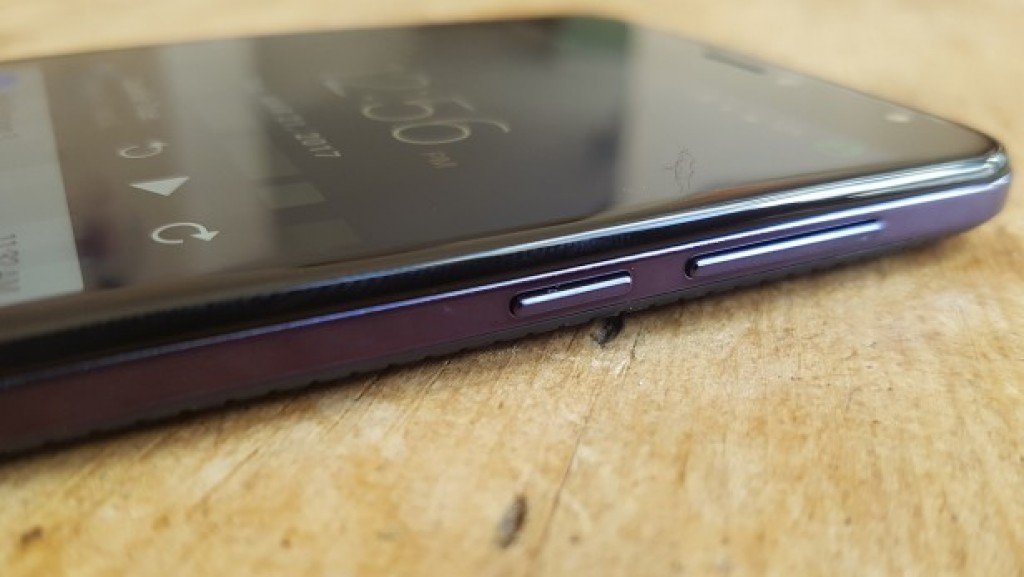
BLU LIFE MAX – DISPLAY
What is more likely to determine your choice of phone, however, is the quality of the display – something that tends to suffer with most budget Android phones. On paper, Blu’s Life Max doesn’t skimp too much here, offering up a 5.5-inch, 1280 x 720-pixel HD resolution panel.
If it had been a 5-inch (or smaller) display, there would have been no issues. With a 5.5-inch panel, however, on-screen items don’t appear as crisp. It’s a similar situation with the brightness and colour reproduction; I have no real complaints, but it certainly isn’t dazzling.
Nevertheless, the display is bright enough to use in direct sunlight and colourful enough to enjoy the odd movie or gaming session. The Blu Life Max’s viewing angles definitely can’t compete with those on a premium device such as the Samsung Galaxy S7 Edge – which costs four times as much, I might add – with the difference in quality of colour reproduction clear to see. However, it never stuck out as a particularly negative aspect in everyday use.
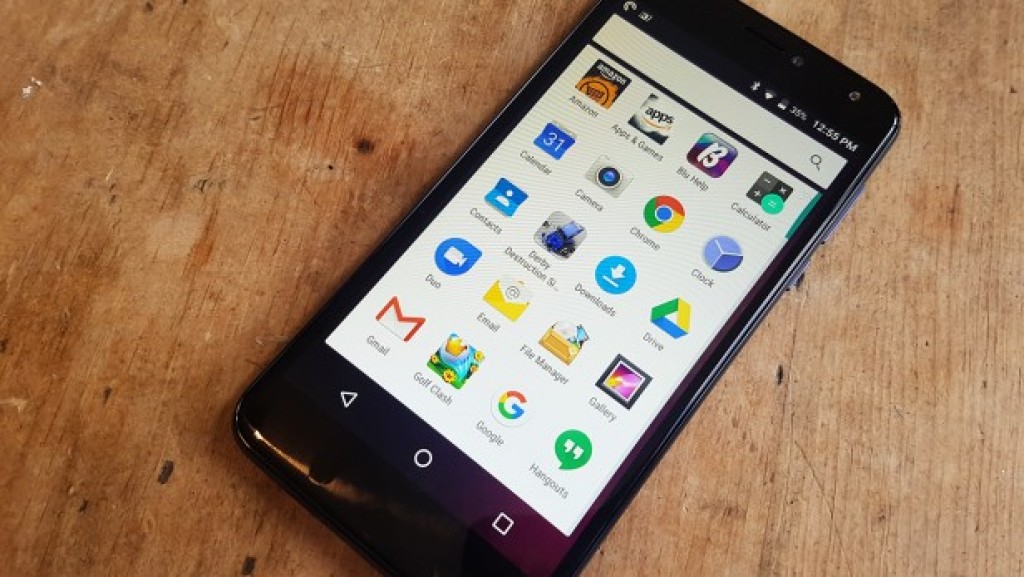
BLU LIFE MAX – PERFORMANCE
Performance is really where the Blu Life Max needs to excel for its class. There’s no use producing a budget handset that sounds good on paper but can’t live up to its claims in the real world.
Thankfully, with the inclusion of 2GB of RAM, most of my gaming experiences on the device were a glitch-free affair. However, trying to play an entirely undemanding game of Golf Clash while installing other apps in the background resulted in lagginess and judder. Once the apps had completed installing, however, I didn’t encounter any other issues. In fact, even more demanding games such as Real Racing 3 remained playable.
Although this might suggest that this device isn’t much of a multi-tasker, the MediaTek chipset has enough oomph to perform everyday tasks without issue. Throw something more demanding at the Life Max, however, and you’re likely to run into delays when opening apps or switching between them.
While my preference isn’t for the fingerprint sensor on the rear, it works well enough. It didn’t unlock every single time, but it was successful many more times than reading errors.
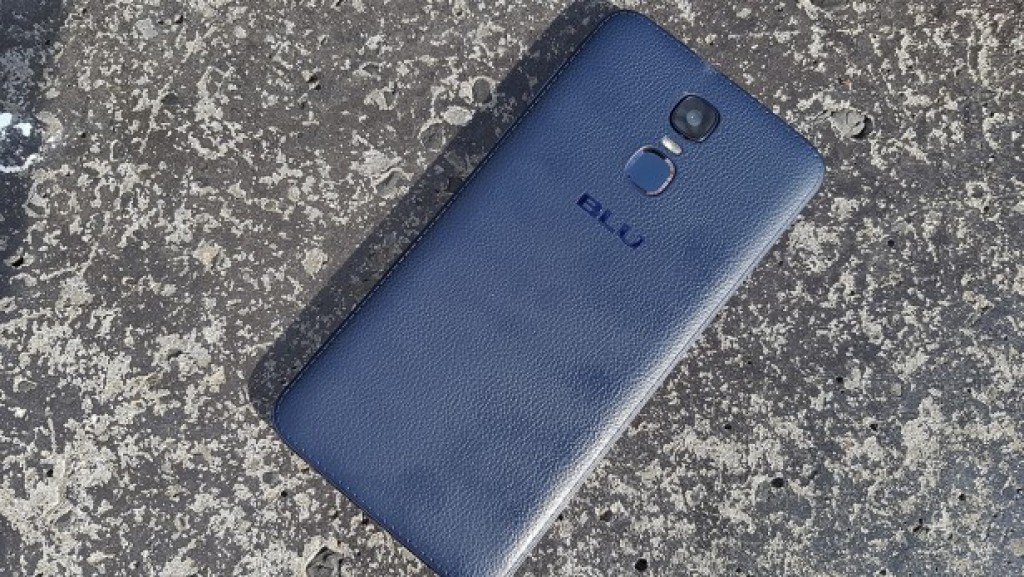
As you’ve probably come to expect by now, you’re unlikely to get great sound quality from the device’s single speaker. In fact, if you crank it up towards its maximum, you’ll mostly get a very tinny sound. This is fine if you listen to podcasts, but not so much if you’re using the integrated speaker to listen to music. But who does that anyway?
In terms of benchmarks, the Blu Life Max’s Geekbench 4 scores sit well below rivals: 516 in the single-core test puts it well below even the Nexus 5 with its Snapdragon 800 chipset. Even its multi-core score of 1394 is behinds the Nexus 5’s 1764.
BLU LIFE MAX – SOFTWARE
Blu’s higher-end models incorporate a minimal custom UI that sits atop Android. However, its cheaper models don’t get this tweaked UI. The result for the Blu Life Max is an almost plain version of Android with minimal bloatware, which is instantly usable for anyone coming from another Android device.
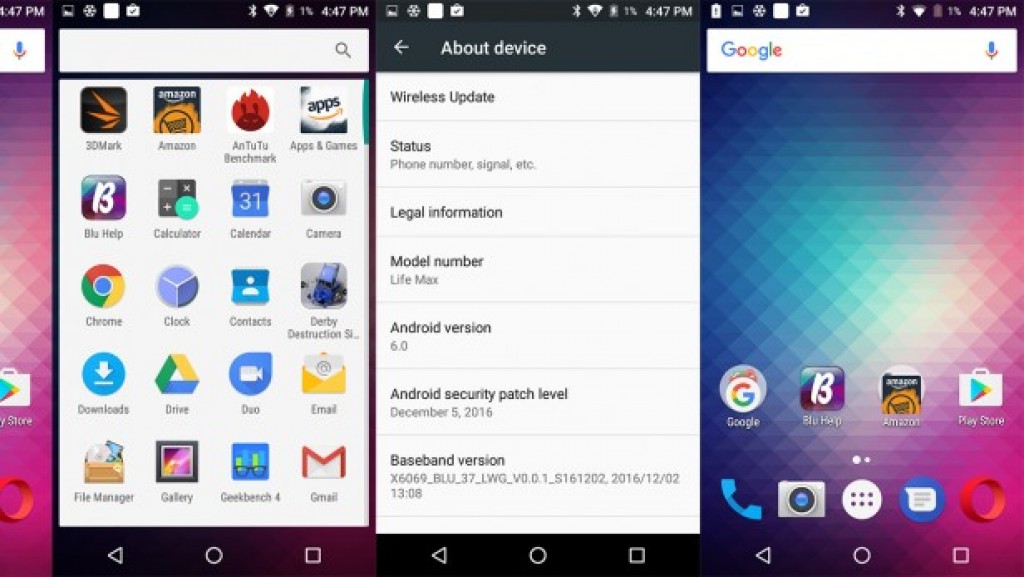
It’s a decision that doesn’t make amuch sense to me. Most Android ‘power users’ won’t appreciate pre-installed apps and changes to the UI simply for the sake of it, so offering a ‘vanilla’ OS on its cheaper devices and a custom UI on its more expensive handsets feels a little backwards to me.
Nonetheless, that’s the situation – and it’s a good thing for potential buyers of the Blu Life Max. The only apps that come pre-installed that you won’t find on most Android phones is ‘Blu Help’ and Amazon’s Underground app store.
Google Play is present, too, so there’s no obligation to download via Amazon. The rest of the OS is pleasingly unmodified Android Marshmallow. A spokesman for the company told us that Android Nougat will be rolling out to the device in the future, but that there’s no specific date for that as yet.
BLU LIFE MAX – CAMERA
With a retail price of £109.99, it’s best to set realistic expectations when it comes to the Blu Life Max’s 8-megapixel rear snapper and the front-facing 5-megapixel sensor.

Images taken on the Blu Life Max are unlikely to be of a quality that you can blow up and hang on a wall, but they’re perfectly passable ‘show to friends on your phone’ quality as long as you ensure they’re taken in decent light. In darker scenes the camera struggles, as do many.
In a couple of the test shots, you can see that the colour has been well represented (the blue sky, for example) but that white balance is a little off in auto mode. On the image of the plant, you can see that it struggled to find a focal point.


The 5-megapixel front-facing camera exceeded expectations, but admittedly, I’m not much of a selfie taker.
Despite being a budget phone, there are still a few camera settings with which you can play. These include an HDR mode and some preset scenes. Ultimately, though, the camera probably isn’t going to be the reason you consider the Blu Life Max – and if it is, it shouldn’t be. It remains decent enough for the money, though.
BLU LIFE MAX – BATTERY
The battery is actually a bit of an oddity in this device. It’s removable, but you can’t actually buy a replacement pack since Blu doesn’t sell any of its products in the UK in physical stores. As a result of regulations about selling batteries via the postal service or delivery, the result is that you can’t get a spare without buying a new phone – which of course would be silly.
It isn’t only the above that’s worth noting, however. The 3700mAh battery is both necessary for the large 5.5-inch panel and considerably more generous than you’d find on many other budget rivals. For comparison, the Moto G4 Play has a 2700mAh battery pack.
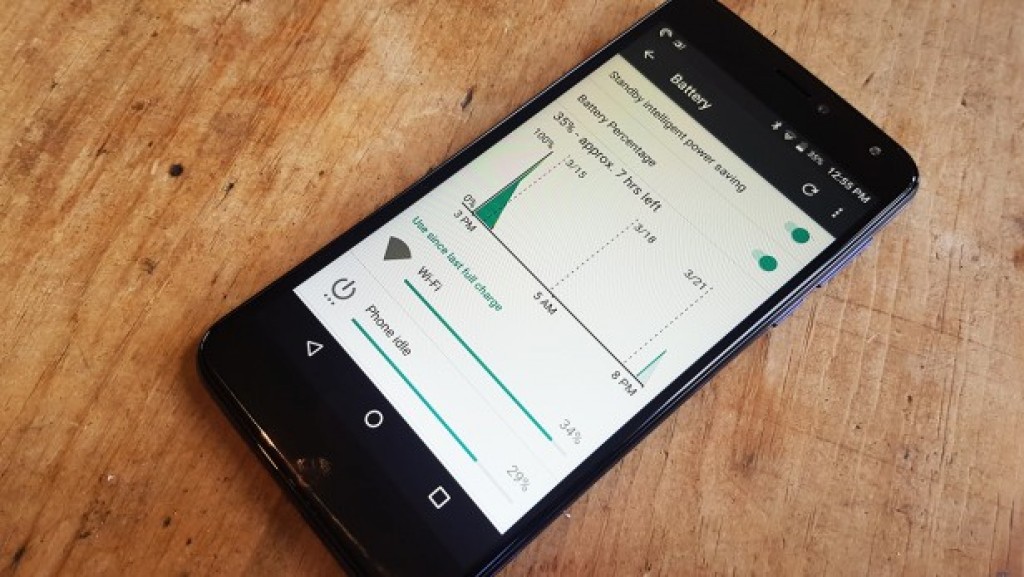
While the company claims three days of average use on a single charge, this will probably prove a little too optimistic for most people – unless you’re careful with what’s turned on and what’s running in the background. I’d say two days is closer to the mark.
While gaming, I saw a decrease of around 10% every 30 minutes, with the screen on maximum brightness and volume at 60%; of course, you could increase this by reducing the brightness.
Watching a 720p video on YouTube fared a little better – a one-hour documentary drained only 13% of the battery once the brightness and volume were both set at 60%.
SHOULD I BUY THE BLU LIFE MAX?
There’s one good reason to buy the Blu Life Max: if you’re after a solid Android experience for around £100 without too many corners being cut.
Yes, the screen isn’t entirely optimal and gaming is somewhat underpowered due to the MediaTek processor, but it’s still possible to play games and watch movies without frustration.
The one stand-out feature of the Blu Life Max is its 3700mAh battery. Its features and performance aren’t much to shout about, but it will still be running long after some of its rivals have run out of power – and that’s worth a lot to the average user.
If you manage to snap up the Blu Life Max at its introductory sale price of £89.99 then it’s really hard to find anything to complain about at that price. However, at £109.99 it’s closer in cost to more established budget devices such as the Moto G4 – although that has a notably smaller screen and battery pack.
VERDICT
At £109.99, you’re unlikely to feel disappointed with the Blu Life Max.

Sоurсе: trustedreviews.com









































